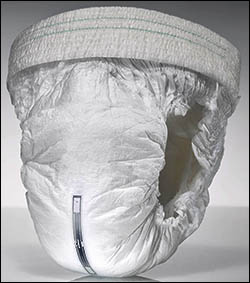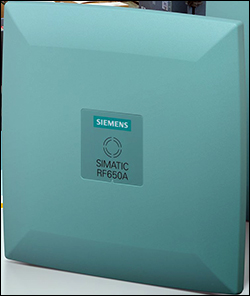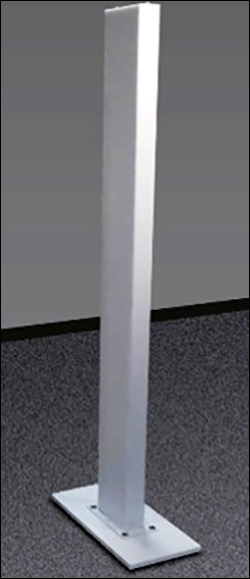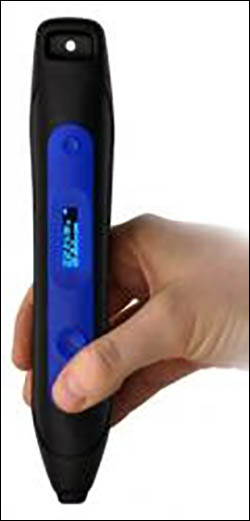The following are news announcements made during the past week by the following organizations:
Tego;
Smartrac;
Siemens;
View Technologies;
NeWave Sensor Solutions;
L-com Global Connectivity, Point Six Wireless; and
Tectus Transponder Technology.
Tego, Smartrac Partner on UHF Tags for Challenging Industrial Environments
Tego and Smartrac have teamed up to develop RFID solutions that leverage Tego’s portfolio of ultrahighfrequency (UHF) chips and software to enhance Smartrac’s offering for the industrial sector. In addition, Smartrac will provide a selection of inlays and tags based on Tego’s rugged, high-memory UHF TegoChip to its global network of customers and partners.
Smartrac announced the immediate availability of a TegoChip version of its Smartrac Dipole inlay that, according to the two companies, is highly resistant to extreme temperatures, survives gamma radiation and electron beam sterilization, and can be tightly embedded into materials used for finished goods. While the TegoChip is available in four different versions, each with a different amount memory (2 kilobits, 1 kilobyte, 8 kilobytes or 24 kilobytes), the companies have not yet announced which versions of the TegoChip will be used for the new Smartrac Dipole tags.
By leveraging TegoChip technology, the companies report, Dipole inlays will enable digital data to survive on physical assets at the beginning of the product manufacturing process, allowing additional data storage throughout the product’s lifecycle—even spanning many decades. Smartrac inlays based on the TegoChip also lay the foundation for an array of solutions that will be developed using Smartrac’s Internet of Things platform, Smart Cosmos.
Smartrac Launches Passive UHF Moisture-Sensing Inlay for Health Care
Additionally, Smartrac has launched Sensor Patch, a passive ultrahigh-frequency (UHF) moisture-sensing inlay for health-care applications. The product is the result of Smartrac’s collaboration with sensor specialist RFMicron, announced in April 2014 (see Smartrac Group and RFMicron to Develop Passive Sensor Tags).
The disposable moisture-sensing inlays can be attached to the outside of any diaper, Smartrac indicates, to help care providers manage urinary incontinence and associated skin irritations. In industrial diaper production, the inlays can also be placed invisibly, between the diaper’s layers.
Caregivers could be equipped with mobile reading devices enabling them to remotely detect if an incontinence event has occurred within roughly 1.5 meters (5 feet). The cost of inlays and readers would pay off quickly, Smartrac notes, in terms of both reduced time allocated to patient toileting, and increased patient dignity and quality of life.
Similar to Smartrac’s Sensor DogBone and Sensor Tadpole, the Sensor Patch is a result of Smartrac’s cooperation with sensor specialist RFMicron. Equipped with RFMicron’s Magnus S2 chip, the Sensor Patch offers cost-efficiency and hassle-free implementation, according to the company. It is deployable where active or semi-active sensors are not practical, Smartrac reports, and involves no battery maintenance, running costs or problems with product lifetime or recycling.
In addition to helping with incontinence, the Sensor Patch could be used in industrial applications. It works well not only on textiles, pulps and nonwoven materials, Smartrac says, but also on cardboard, plastics, stone, wood and construction materials. Future sensor inlays will further expand the scope of applications, the company says.
The inlay’s antenna acts as a resistor/inductor/capacitor (RLC) tuned circuit. Any one of these, or any combination of the three, can be exploited to enable the antenna to sense its environment. In this way, Smartrac explains, the antenna converts environmental data into an impedance change, and the sensor tag IC then translates this into a sensor code, as it dynamically matches antenna impedance to die impedance.
“Traditional sensors exploit changes in resistance to measure environmental variables, but this results in reduced tag read range due to power dissipated in the resistance,” said Peter Walendy, the senior VP of Smartrac Technology Group’s, Intelligent Things Business Division, in a prepared statement. “With their ability to use inductance or capacitance, our Smartrac sensor inlays effectively avoid read-range issues. Thus they offer great performance in diverse and challenging circumstances, and accurately detect and measure moisture levels in a wide array of environments and areas of application—be it industrial production or geriatric care.”
Smartrac will supply the Sensor Patch in dry and wet formats to suit all converting industry needs. The product complies with all relevant industry standards and strict quality-control parameters, according to the company. It is based on RFMicron Magnus S2 chip, and works in the 860 to 960 MHz frequency range. The inlay’s die-cut size is 105 millimeters by 11.62 millimeters (4.1 inches by 0.5 inch) in ETSI standard, and 100 millimeters by 11.62 millimeters (3.9 inches by 0.5 inch) in FCC standard. The inlay is available now.
Siemens Intros Adaptive-Polarization RFID Reader Antenna
Siemens has introduced the Simatic RF680A, an adaptive antenna for its RF650R, RF680R and RF685R ultrahigh-frequency (UHF) readers. The variable-polarization antenna (linear or circular) is designed to simplify the commissioning and planning of RFID applications, the company reports, and the automatic antenna adjustment facility allows for increased read and write reliability.
The antenna offers flexibility to users, Siemens says, as it is frequently impossible to know, during the planning phase, whether linear or circular polarizing antennas will be required. The RF650R and RF680R readers contain ports for four external antennas, allowing the implementation of four read points. With the RF685R, two read points are possible.
Where the ambient conditions differ (reading distance, tag positioning and reflections), a user can adjust the antenna’s polarization, Siemens says. Alternatively, the reader can use special algorithms to automatically select the proper antenna configuration for each individual read operation. This not only saves time during commissioning, the company explains, but also improves reliability, particularly in highly reflective wireless environments.
The reader design features an improved front-to-back ratio that reduces reflections and the resulting interference or falsified read results. It also has a large multi-color LED to clearly indicate antenna activity, recorded tags and errors.
In addition, Siemens is launching another circular antenna, the Simatic RF650A. In combination with the Simatic RF650R, Siemens indicates, this model is suitable as a cost-effective system for use in industrial and logistics applications.
Both new antennas have an IP 65 rating, meaning they are impervious to water and dust, and feature compact dimensions—198 millimeters by 198 millimeters by 60 millimeters (7.8 inches by 7.8 inches by 2.4 inches)—as well as an operating temperature range of -25 degrees to +75 degrees Celsius (-13 degrees to +167 degrees Fahrenheit). The wide transmission frequency range of 865 to 928 MHz allows both devices to be used anywhere throughout the world.
View Technologies Initiates Starter Program for RTLS, RFID Solution Providers
View Technologies, a joint venture between Stanley Black & Decker and RF Controls, has announced its Starter Program as a way for developers and systems integrators to evaluate the capabilities of View’s Echo smart antennas and the inView Software Platform for real-time location systems (RTLS) and RAIN RFID implementations in retail, manufacturing and logistics settings.
View Technologies aims to provide RTLS solutions to businesses more accustomed to employing portals or handheld readers to interrogate passive EPC Gen 2 ultrahigh-frequency (UHF) tags, sometimes referred to as RAIN RFID tags (see View Technologies Launches Long-Range RTLS for Passive UHF Tags). The Echo antenna uses steerable phased-array technology, allowing it to create a cone-shaped read zone for long distances, while related software can create zones within the Echo antenna’s range as small as a customer needs, down to less than 1 foot in granularity. The term “steerable phased array” refers to the use of an array of antennas able to create varying beam direction and radiation patterns to reinforce one direction of RF transmission, while suppressing the transmission of RF signals in other directions.
With inView, companies can know where their RFID-tagged items are located in real time, as well as when they are moved and in what direction, according to View Technologies. They can then collect analytics based on that data, view it in real time or receive alerts when specific events occur, such as an item heading through a door.
According to View Technologies, the new Starter Program offers everything required to rapidly evaluate, develop and deploy proof-of-concept applications that leverage Echo smart antennas and the inView Software Platform. “Prospective partners who create, deploy and support RFID solutions now have access to a turn-key program to gain a thorough understanding of our product’s capabilities,” said Steve Hudson, View Technologies’ president, in a prepared statement, “and hands-on experience of these innovative, enabling technologies.”
The first component of the program features the integration of the inView Software Platform, a framework that collects RFID data through standard interfaces to deliver location-based data and notifications. Utilizing an antenna emulator that simulates live antenna data, a developer can integrate, build and test in a software development “sandbox.” Once the software platform is integrated, Echo smart antennas are installed, configured and connected to the inView Software Platform, where end-to-end use-case testing can be completed. Throughout the solution-development process, View Technologies explains, participants learn how to take full advantage of the patented Echo smart antennas and produce solutions within their own systems and software applications, in a way that will best support their customers.
NeWave Unveils Floor-Mount Portal
RFID firm NeWave Sensor Solutions has announced the NeWave Floor-Mount Portal (Wave-PFM1), an RFID portal that is easy to move and install, and can be bolted to the floor or installed with a portable base plate with rubber bumpers. According to the company, the portal is plug-and-play and ready to be connected to any EPC Gen 2 ultrahigh-frequency (UHF) RFID reader, light enough to provide mobility for events and trade shows or test applications, and suitable for use in doorways.
According to NeWave, the Floor-Mount Portal weighs 25 pounds (without reader) and has two NeWave antennas built in. The portal measures 6 feet in height by 8 inches width by 3 inches in thickness (7- and 8-foot-high portals are also available). No installation adjustments and follow-on maintenance are required, the company reports. According to NeWave, a pair of portals provide zone coverage for an entire door area, utilizing the company’s patented Wave antennas that provide advanced UHF coverage without extraneous tag reads, and are designed to cover all polarizations in which the tagged item moves. Read range is adjustable based on the reader RF power level.
NeWave’s patented antenna technology, the Wave RFID antenna, is specifically designed to address the needs of item-level tagging. According to NeWave, traditional patch antennas—originally built for medium-range communication systems—radiate beams in a conical fashion, with polarization that is transverse to the beam’s direction. Consequently, such patch antennas have difficulty reading tags if they are not properly oriented, and might miss a tag up close simply due to it lying outside the beam or having misaligned polarization.
L-com to Make, Sell Wireless Sensors From Point Six
L-com Global Connectivity, a manufacturer of wired and wireless connectivity products, has announced that it has acquired the exclusive rights to manufacture and sell Point Six Wireless sensors on a global basis, through a partnership with Point Six Wireless.
Point Six Wireless designs wireless sensors, including those operating in the 418 MHz, 900 MHz or 2.4 GHz (Wi-Fi) frequency bands. The company’s products are suitable for customized application-specific solutions, according to L-com, and are being used across multiple market sectors to deliver wireless sensor solutions.
Point Six Wireless temperature and humidity sensors, CO2 sensors, data loggers, people-counting sensors and energy-monitoring sensors help organizations manage energy usage, optimize operations and meet regulatory compliance standards, L-Com reports. Products include, for example, a 418 MHz Wireless Temperature Sensor, a battery-operated digital temperature sensor with a microprocessor-controlled FCC-certified radio transmitter and a battery life of up to four years. The sensor has an on-board clock that allows it to spend most time in a low-power quiescent state; at predetermined time intervals, the clock will awaken the onboard microprocessor.
Onboard calibration tables provide a linear temperature output using an internal thermistor. This information is combined with a CRC-16 error check and transmitted in a very short data packet that results in a very short transmitter on-time, according to the company. The electronics are coated with a conformal material that provides a moisture barrier against condensation (submersion in water, however, is not recommended). A button on the top of the ABS cover permits a user to activate the service switch. When this switch is pushed, a data transmission occurs immediately and a special mark is introduced in the ID field of the transmitted data packet, indicating which sensor is in service or installation.
In addition, L-com says, Point Six’s cloud services software, known as Point View, can monitor sensors, generate reports and send text and e-mail alerts and alarms to any PC, tablet or smartphone.
Manufacturing and distribution of most Point Six Wireless products has been transferred to and launched at L-com’s facility in Denton, Texas.
Tectus Releases Multi-Frequency Pen-Shaped RFID Reader
Tectus Transponder Technology, a Germany-based provider of ATEX RFID system components, readers and transponders, has announced an integrated RFID and Near Field Communication (NFC) handheld reader for use in industrial areas for maintenance and logistics processes. The MultiPen mobile RFID/NFC reader, according to the company, is designed to help identify tagged equipment in environments where the RFID and NFC tags are installed in a corner or are very close to each other, making the use of smartphones or tablets impractical.
The lightweight reader is available in a three-in-one multi-frequency version to read 125 kHz, 134 kHz FDX-B/HDX and 13.56 MHz passive RFID tags (compliant with the ISO 15693 and ISO 14443 standards), according to Tectus. When a user pushes the read button, the reader can capture the unique ID (UID) numbers encoded to the transponders. The ID is displayed on the four-row, OLED device display, the company explains, and—depending which mode was chosen—can be stored in the device’s memory, or be sent directly to a smartphone or tablet via the Bluetooth connection.
In addition, data transfer can be accomplished via the MultiPen’s integrated USB interface, by using the synchronization function. The USB connection is also used to charge the MultiPen’s battery, which can last for an entire day and perform up to 1,000 UID reads, the company reports.
The MultiPen can be configured via an Android or Microsoft Windows app. Additional MultiPen versions and combinations for reading the UIDs of ultrahigh-frequency (UHF) RFID tags are expected to be introduced at a later date, according to Tectus.





